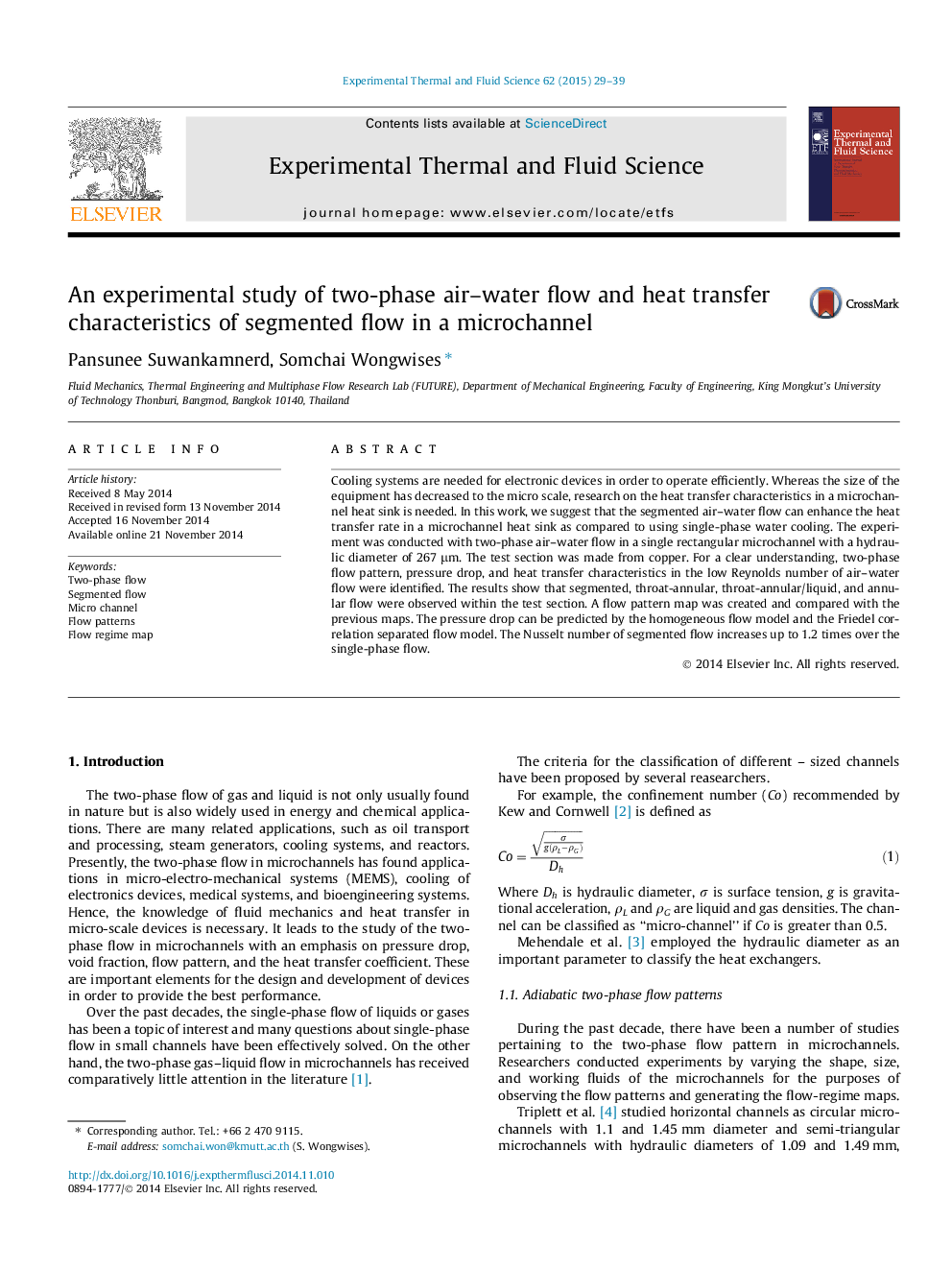| Article ID | Journal | Published Year | Pages | File Type |
|---|---|---|---|---|
| 651283 | Experimental Thermal and Fluid Science | 2015 | 11 Pages |
•The segmented air–water flow can enhance the heat transfer rate.•The experiment was conducted with air–water flow in a rectangular microchannel.•Flow pattern, pressure drop, and heat transfer in the low Reynolds number were identified.•Segmented, throat-annular, throat-annular/liquid, and annular flow were observed.•Nusselt number increases up to 1.2 times over the single-phase flow.
Cooling systems are needed for electronic devices in order to operate efficiently. Whereas the size of the equipment has decreased to the micro scale, research on the heat transfer characteristics in a microchannel heat sink is needed. In this work, we suggest that the segmented air–water flow can enhance the heat transfer rate in a microchannel heat sink as compared to using single-phase water cooling. The experiment was conducted with two-phase air–water flow in a single rectangular microchannel with a hydraulic diameter of 267 μm. The test section was made from copper. For a clear understanding, two-phase flow pattern, pressure drop, and heat transfer characteristics in the low Reynolds number of air–water flow were identified. The results show that segmented, throat-annular, throat-annular/liquid, and annular flow were observed within the test section. A flow pattern map was created and compared with the previous maps. The pressure drop can be predicted by the homogeneous flow model and the Friedel correlation separated flow model. The Nusselt number of segmented flow increases up to 1.2 times over the single-phase flow.
